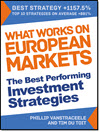In April 2020 O’Shaughnessy Asset Management published an interesting research paper called A Historic Opportunity in Small Cap Stocks .
Here is an extract (I added the bold comments):
A HISTORIC OPPORTUNITY IN SMALL CAP STOCKS
Every so often there are opportunities that may only appear 2-3 times in an investor’s career, usually around a bear market or recession. In light of the recent bear market, evidence suggests that a historic opportunity may be forming in small cap stocks, among the lowest returning assets in March (Russell 2000 Index, -21.73%) and Q1 (Russell 2000 Index, -30.61%).
Yet, small cap stocks are one of the better returning assets after bear markets . As the data below shows, small stocks are generally the lowest performers as markets fall, but then significantly outperform when markets recover .
…
Small Cap Value & Large Cap Growth Spreads Near All Time Highs
Using history as a guide, the current environment in small cap stocks is almost unprecedented. When comparing the earnings yield of the cheapest small stocks (cheapest decile by price-to-earnings) to the most expensive decile of large cap stocks in the US we see a spread of more than 21%. Following extreme periods like this historically , small value outperformed large growth by 16.8% annualized over the following 10 years.
Earnings Yield Spread on Small Cap Value & 10-Year Treasury Near All Time Highs
A similar dynamic exists in the earnings yield on small cap stocks (cheapest decile) and the 10-year U.S. Treasury yield. This spread is generally between 3-6%, but is greater than 20% today. Following similar spreads in the past, small value stocks returned an average of 27.9% in the subsequent 10-year period.
…
INCORPORATING QUALITY IN SMALL CAP VALUE
While small cap value has a long record of generating meaningful outperformance, we must emphasize that investors should not simply buy the cheapest decile of small stocks . Due to their size, small cap companies are generally more susceptible to economic shocks like the one we currently face. By merely buying the cheapest group of small cap stocks, there is no safeguard protecting investors from unstable companies ill-prepared for an economic downturn.
For this reason, it is crucial to incorporate quality factors in the investment process for avoiding these unprepared and ill-equipped companies. At OSAM, we screen out companies from our investable universe that score poorly on Financial Strength (highly levered companies reliant on external funding), Earnings Quality (companies with non-cash earnings and aggressive accounting), and Earnings Growth (declining free cash flow and profitability).
This is how you find quality cheap small caps
If this sounds interesting this article that shows you exactly how to find quality undervalued small cap companies: This simple Microcap investment strategy beats the professionals – Data driven.
The screen you should use is shown further down on the article so just scroll down.
Remember you can apply this strategy to any country not just in the USA.
Look for the smallest 2000 companies
The Russell 2000 Index, mentioned above, is a small-cap stock market index of the smallest 2,000 US stocks.
As of 31 December 2019, the weighted average market value of a company in the index was around $2.48 billion; the median market value was $821 million. The market value of the largest company in the index was $8.27 billion
This gives you a good idea of where to set your market value limits in the screener. Perhaps deduct 30% from the above values to compensate for the fall in the markets so far this year.
This screen can also help you
For a few other ideas on how you can make the most from the current market crash take a look at this article: How to find great investments when the market crashes
PS Not a stock screener subscriber yet? To find the best investment ideas in small cap stocks (for about €1 per day) click here: Join today
PPS It is so easy to forget and put things off and forget, why don’t you sign up right now ?


